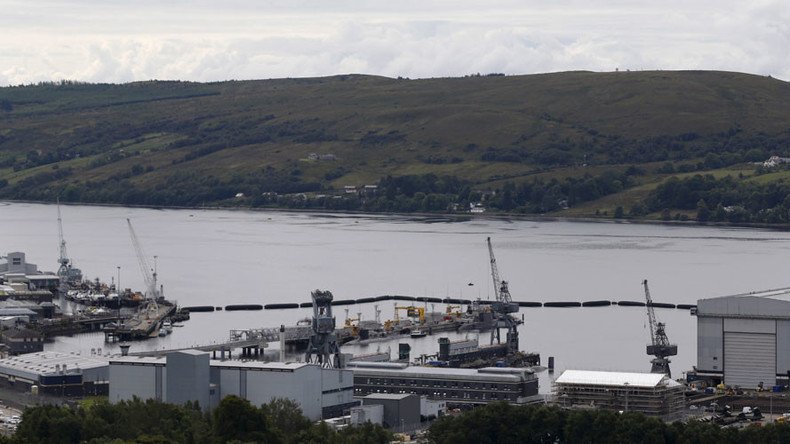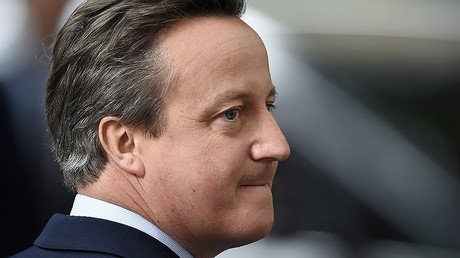UK govt docs: Thatcher cabinet told of approval to shoot nuclear-base intruders

Newly-released British state documents have revealed that soldiers were ordered to shoot suspected intruders at a naval base after activists managed to break into the control room of a nuclear-powered submarine.
The so-called ‘Faslane Five’ anti-nuclear protesters snipped a boundary fence and managed to sneak their way all the way into the control room of a submarine at Clyde Naval Base in 1988, leaving then-Prime Minister Margaret Thatcher “utterly horrified.”
Three of the activists reached the control room of a ballistic missile submarine, ‘HMS Repulse’. Another one of the intruders, wearing only a swimsuit, swam 150 meters out to a floating dock which she spray painted with anti-nuclear slogans. The report concluded that the aim of the break in was to graffiti the floating dock and the men who boarded the ‘Repulse’ did it to act as a diversion for the swimmer.
“Examples of slackness in sensitive matters keep coming to light,” Thatcher said in papers which are among records filed in 1989 and 1990 and released by the UK’s National Archives on Friday.
“We got into the control room and we could see an official with his feet up on the console, smoking a fag, drinking a can of beer and reading his book. He spun around and looked at us and panicked,” one of the protesters, Ian Robert Mills, told the Times.
Thatcher demanded “an urgent report” on the “grave danger” posed by such a significant security breach.
A Ministry of Defence (MoD) memo said “there was absolutely no risk of a nuclear explosion or radiation.” It listed a catalogue of failings at the facility – a “sorry succession of security lapses” – including that the alarm system on the outer fence had been switched off, the police patrols were on an unauthorized break when the break-in happened and the floodlights were not working properly.
As a result of the intrusion, sentries were ordered to shoot anyone suspected of trying to sabotage a submarine or nuclear weapon “as a last resort.”
The submarine’s quartermaster saw the intruders, according to the documents, but “initially thought that the three men were personnel from a Royal Maritime Auxiliary Service (RMAS) craft” and did not immediately raise the alarm.
When the intruders turned and ran down the gangway, “the Quartermaster shouted to the Royal Marine armed sentry on the jetty, who raised the alarm by radio, but did not open fire because he did not consider the intruders to be hostile within the definition of his Rules of Engagement.”
Thirteen Royal Navy personnel were disciplined after the inquiry. The activists went on trial for the intrusion, however, the case collapsed in September 1989.













